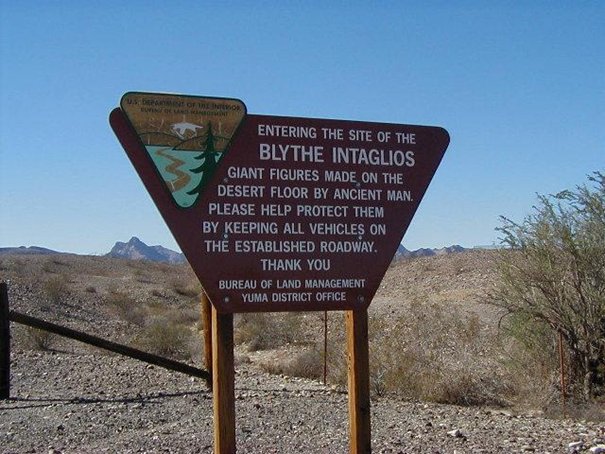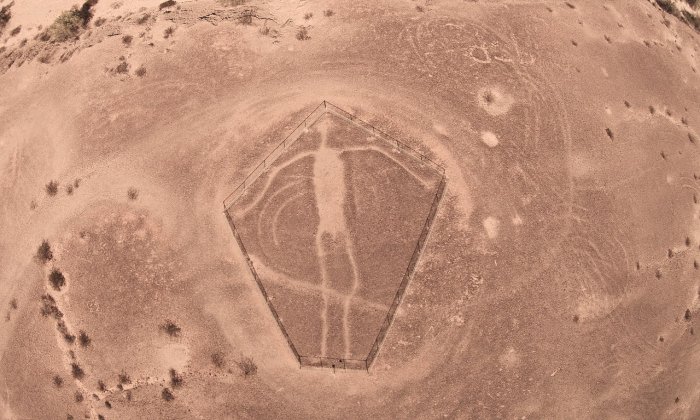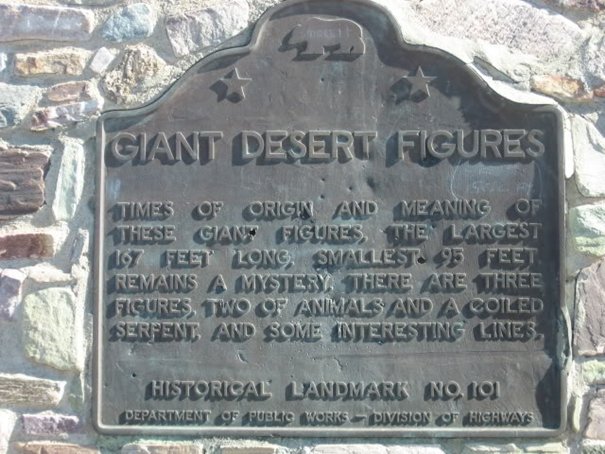Cryptic North American Blythe Intaglios Reveal The Creator Of Life: Who Was This Unknown Being?
Ellen Lloyd - AncientPages.com - The Blythe Intaglios are not as famous as the Nazca Lines in Peru, but they are equally interesting and hold many secrets to our puzzling evolutionary past.
In the American Southwest and adjacent Mexico, there are over 300 remarkable intaglios.The most famous is the Blythe Intaglios, located west of the Colorado River about 15 miles north of Blythe, California.
Here we come across gigantic human and animal figures carved on the ground. Just like Peru's wonderful and intriguing Nazca lines, these figures can only be seen properly from the air, which is the reason they weren't discovered by white men until the 20th century.
If you plan on seeing the Blythe Intaglios - be careful and watch your steps. The carvings are very sensitive to damage.
In 1930, aviator George Palmer flew over the region and spotted enormous outlines of a man, a woman, a horse, a coiled snake.
He reported his find to the Southwest Museum but lacking funds because of the Depression, they couldn't investigate the figures until 1952. It was first when the National Geographic Society and the Smithsonian Institution sent airborne archaeologists to the site that the world learned about these fascinating huge carvings.
The Blythe Intaglios in the desert of California consist of six distinct figures in three locations, including a human figure at each location and an animal figure at two locations. The largest human figure measures 171 feet from head to toe.
The age of carvings is unknown. However, scientists estimate the Blythe Intaglios to be between 450 to 2000 years old. Ancient artists created the figures using the intaglio process.
Blythe Intaglios. Image credit: Rsfinlayson - CC BY-SA 4.0
They scraped away a shallow layer of dark surface soil and rock to reveal light-colored soil underneath, and piled dark gravel around the figures to outline them. Though portions of the effigies can be seen if one is standing right next to them, they are virtually invisible just a few feet away. Neither adjacent hills nor distant mountains offer clear views of the Intaglios.
It is possible to go and see the Intaglios, but one should be careful because these carvings susceptible to damage.
Any mark made on the desert pavement will be visible for many centuries. This is why it was decided they should be fenced to prevent further damage.
The carvings are intriguing because we do not know who or what they represent. We also do not know who their creators were.
The larger of the figures, thought to be the outline of a woman, is about 175 feet long. Her outstretched arms span 158 feet. Near her is an anatomically correct male figure, about 95 feet tall. There's also a 53-foot-long, four-footed creature that's been alternatively identified as a panther, a coyote, or a horse.
According to the stories told by modern-day Mohave and Quechan Indians the human figures represent Mastamho, the Creator of Earth and all Life, while the animal figures represent Hatakulya, one of two mountain lions who helped in the Creation. Sacred ceremonial dances were held in the area in ancient times to honor the creation.
The creators of these mysterious desert carvings, but are long gone. All we have left is a cryptic message they left to future generations.
The Blythe Intaglios still remains an unsolved mystery. Perhaps the clue to this ancient mystery can be found in the fact that the figures can best be seen from the air. Were they intended to be watched and admired by someone who possessed the ability to fly?
Written by Ellen Lloyd – AncientPages.com
More From Ancient Pages
-
 Are We Really In A Sixth Mass Extinction?
News | Apr 11, 2023
Are We Really In A Sixth Mass Extinction?
News | Apr 11, 2023 -
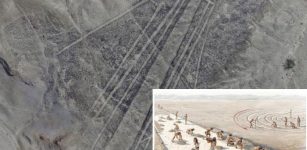 Dozens Of Giant ‘Lost’ Nazca Geoglyphs Unearthed By Drones In Peru
Archaeology | Apr 7, 2018
Dozens Of Giant ‘Lost’ Nazca Geoglyphs Unearthed By Drones In Peru
Archaeology | Apr 7, 2018 -
 Stone Age Humans Unlocked The Glucose In Plants 40,000 Years Ago
Archaeology | Apr 1, 2020
Stone Age Humans Unlocked The Glucose In Plants 40,000 Years Ago
Archaeology | Apr 1, 2020 -
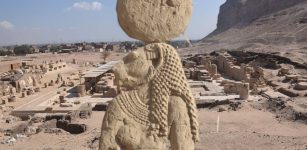 Is An Ancient Temple Dedicated To The Lioness Goddess Repit Hidden In The Cliffs Of Athribis?
Archaeology | Dec 10, 2024
Is An Ancient Temple Dedicated To The Lioness Goddess Repit Hidden In The Cliffs Of Athribis?
Archaeology | Dec 10, 2024 -
 Mystery Of The Vanished Settlers Of Greenland – What Happened To The Lost Viking Colonists?
Books | Jul 22, 2023
Mystery Of The Vanished Settlers Of Greenland – What Happened To The Lost Viking Colonists?
Books | Jul 22, 2023 -
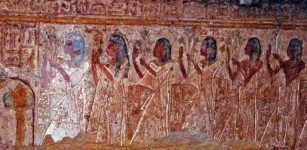 Rock-Cut Tomb Of Pennut, Viceroy Of Nubia Under Reign Of Ramses VI
Civilizations | Dec 7, 2018
Rock-Cut Tomb Of Pennut, Viceroy Of Nubia Under Reign Of Ramses VI
Civilizations | Dec 7, 2018 -
 Ancient DNA Reveals Unknown Genetic Exchanges Between North And South America
Archaeology | Nov 12, 2018
Ancient DNA Reveals Unknown Genetic Exchanges Between North And South America
Archaeology | Nov 12, 2018 -
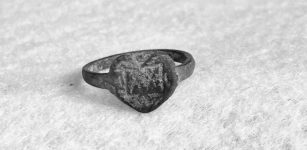 Unique Heart-Shaped Jesuit Ring At Fort St. Joseph In Michigan
Archaeology | Sep 17, 2022
Unique Heart-Shaped Jesuit Ring At Fort St. Joseph In Michigan
Archaeology | Sep 17, 2022 -
 Why Napoleon’s Invasion Of Russia Was A Fiasco
Ancient History Facts | Mar 31, 2017
Why Napoleon’s Invasion Of Russia Was A Fiasco
Ancient History Facts | Mar 31, 2017 -
 Stunning Ancient Lod Mosaic With Message Of Approaching Danger To The Ship At Sea
Artifacts | Aug 14, 2023
Stunning Ancient Lod Mosaic With Message Of Approaching Danger To The Ship At Sea
Artifacts | Aug 14, 2023 -
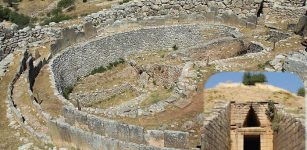 Mycenae Kingdom: Home To King Agamemnon And Tholos Tomb ‘Treasure of Atreus’
Civilizations | Jun 11, 2022
Mycenae Kingdom: Home To King Agamemnon And Tholos Tomb ‘Treasure of Atreus’
Civilizations | Jun 11, 2022 -
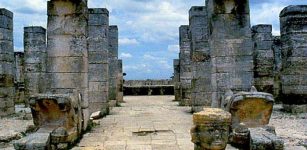 ‘Chac Mool’ – Intriguing Life-Size Figure Carved In Single Stone
Featured Stories | Mar 5, 2016
‘Chac Mool’ – Intriguing Life-Size Figure Carved In Single Stone
Featured Stories | Mar 5, 2016 -
 On This Day In History: Edgar Allan Poe Known For Tales Of Mystery And Macabre Was Born – On Jan 19, 1809
News | Jan 19, 2017
On This Day In History: Edgar Allan Poe Known For Tales Of Mystery And Macabre Was Born – On Jan 19, 1809
News | Jan 19, 2017 -
 Amazing Archaeological Discovery In Washington Confirms Thousand-Year-Old Legend
Featured Stories | Jul 7, 2024
Amazing Archaeological Discovery In Washington Confirms Thousand-Year-Old Legend
Featured Stories | Jul 7, 2024 -
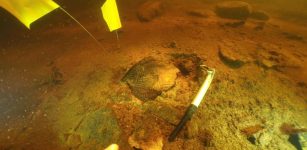 Neolithic Culinary Traditions Uncovered
Archaeology | Sep 7, 2022
Neolithic Culinary Traditions Uncovered
Archaeology | Sep 7, 2022 -
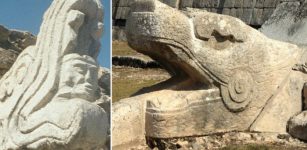 Kukulkan (Quetzalcoatl): Feathered Serpent And Mighty Snake God
Featured Stories | Feb 7, 2017
Kukulkan (Quetzalcoatl): Feathered Serpent And Mighty Snake God
Featured Stories | Feb 7, 2017 -
 Why Was Napoleon Bonaparte Defeated At Waterloo?
Ancient History Facts | Jul 3, 2017
Why Was Napoleon Bonaparte Defeated At Waterloo?
Ancient History Facts | Jul 3, 2017 -
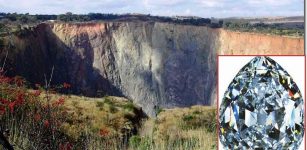 On This Day In History: 3,106-Carat Diamond Found – On Jan 25, 1905
News | Jan 25, 2017
On This Day In History: 3,106-Carat Diamond Found – On Jan 25, 1905
News | Jan 25, 2017 -
 Edøy Discovery: Traces Of 1,000-Year-Old Ship Burial Detected In Norway
Archaeology | Nov 24, 2019
Edøy Discovery: Traces Of 1,000-Year-Old Ship Burial Detected In Norway
Archaeology | Nov 24, 2019 -
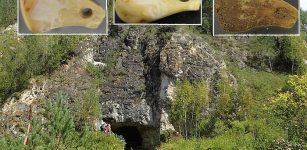 An Ancient Woman’s DNA From A 20,000-Year-Old Pendant – Recovered By Researchers
Archaeology | May 4, 2023
An Ancient Woman’s DNA From A 20,000-Year-Old Pendant – Recovered By Researchers
Archaeology | May 4, 2023

